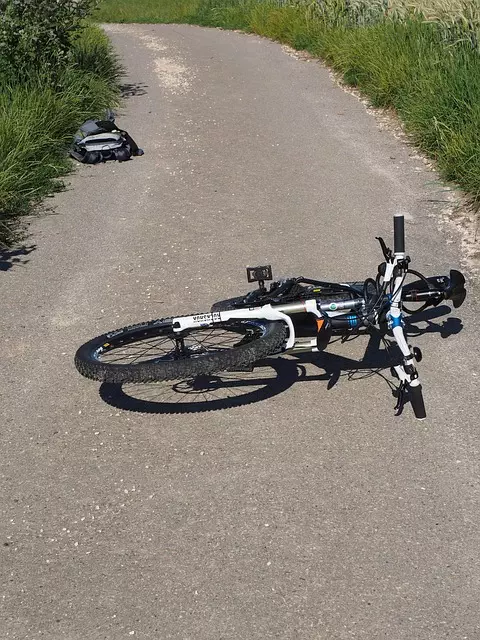In New York City, cyclists have rights and responsibilities, including adhering to traffic signals and wearing protective gear like helmets due to high traffic and narrow roads. With cycling's popularity, traumatic brain injuries (TBI) among riders are a growing concern, especially in Manhattan's fast-paced environment. After an accident, understanding your legal rights under NYC laws is crucial; seeking compensation for medical bills and other damages may be possible if negligence is involved, as consulting a specialized attorney can ensure fair restitution.
“In the bustling landscape of Manhattan, cyclists face unique challenges navigating the urban jungle. This article delves into the crucial topic of cyclist right-of-way rules, exploring how riders can protect their safety and understand their legal protections. With a focus on New York City, we discuss traumatic brain injuries (TBI), a growing concern among NYC cyclists, and guide readers through the legal options available after accidents. By understanding your rights, you can help ensure a safer cycling experience in one of the world’s most vibrant cities.”
- Understanding Cyclist Rights and Safety in Manhattan
- Traumatic Brain Injuries: A Growing Concern for Cyclists in NYC
- Navigating Legal Options After a Cycling Accident in New York City
Understanding Cyclist Rights and Safety in Manhattan

In New York City, cyclists have specific rights and responsibilities, especially in bustling Manhattan. Understanding these rights is crucial for both riders and drivers to ensure safe navigation on city streets. Cyclists are considered vehicle operators, granting them the same rights as motorists, including the right to occupy the road and make turns. However, they must also adhere to traffic signals and stop signs, just like any other vehicle.
Safety is a primary concern for cyclists in Manhattan due to heavy traffic and narrow roads. Cyclists are encouraged to be proactive by wearing protective gear, including helmets, to minimize the risk of injuries, particularly traumatic brain injuries (TBI), which can have severe consequences. Awareness and visibility are key; riders should signal intentions clearly, stay alert, and make themselves visible to drivers. Many bike accidents in NYC involve right-of-way violations, so cyclists must be vigilant and know their rights to avoid potential hazards, especially when sharing the road with larger vehicles.
Traumatic Brain Injuries: A Growing Concern for Cyclists in NYC

In the vibrant but bustling metropolis of New York City, cycling has become an increasingly popular mode of transportation and recreation. However, amidst the growing number of cyclists on the roads, there’s a pressing concern that often goes unnoticed—traumatic brain injuries (TBI). NYC’s fast-paced traffic and complex network of streets pose unique challenges for cyclists, making them more susceptible to severe head traumas in accidents.
With the city’s ever-expanding cycling infrastructure, it’s crucial to highlight the vulnerability of cyclists to TBIs. Even at relatively low speeds, a collision can result in significant brain injuries. As cyclists navigate through traffic and share the road with larger vehicles, the risk of traumatic incidents increases. Awareness of this growing concern is essential for both riders and the general public, emphasizing the need for enhanced safety measures and a culture that prioritizes cyclist well-being in New York City.
Navigating Legal Options After a Cycling Accident in New York City

After a cycling accident in Manhattan, understanding your legal options is crucial. If you’ve suffered an injury, especially a traumatic brain injury (TBI), navigating New York City’s legal system can seem daunting. The first step is to assess your situation and gather evidence—photographs of the scene, medical records, witness statements, and any relevant surveillance footage. This information will be vital when filing a claim or lawsuit against responsible parties, such as drivers who violated your right of way.
In New York City, cyclists have specific rights and protections under the law. If another party’s negligence led to your accident, you may be entitled to compensation for medical expenses, pain and suffering, lost wages, and more. It’s important to consult with an experienced attorney specializing in cycling accidents and traumatic brain injuries to understand your rights and the best course of legal action. They can guide you through the process, ensuring you receive fair and just restitution.
Cycling in Manhattan comes with unique challenges, and understanding your rights and the legal landscape is crucial. As discussed, cyclists face significant risks, especially regarding traumatic brain injuries (TBI), which have become a growing concern in NYC. If you’ve been involved in an accident, navigating your legal options is essential to ensure justice and compensation. By being aware of your rights and the steps to take after an incident, cyclists can better protect themselves and seek the support they need following a cycling accident in New York City.
